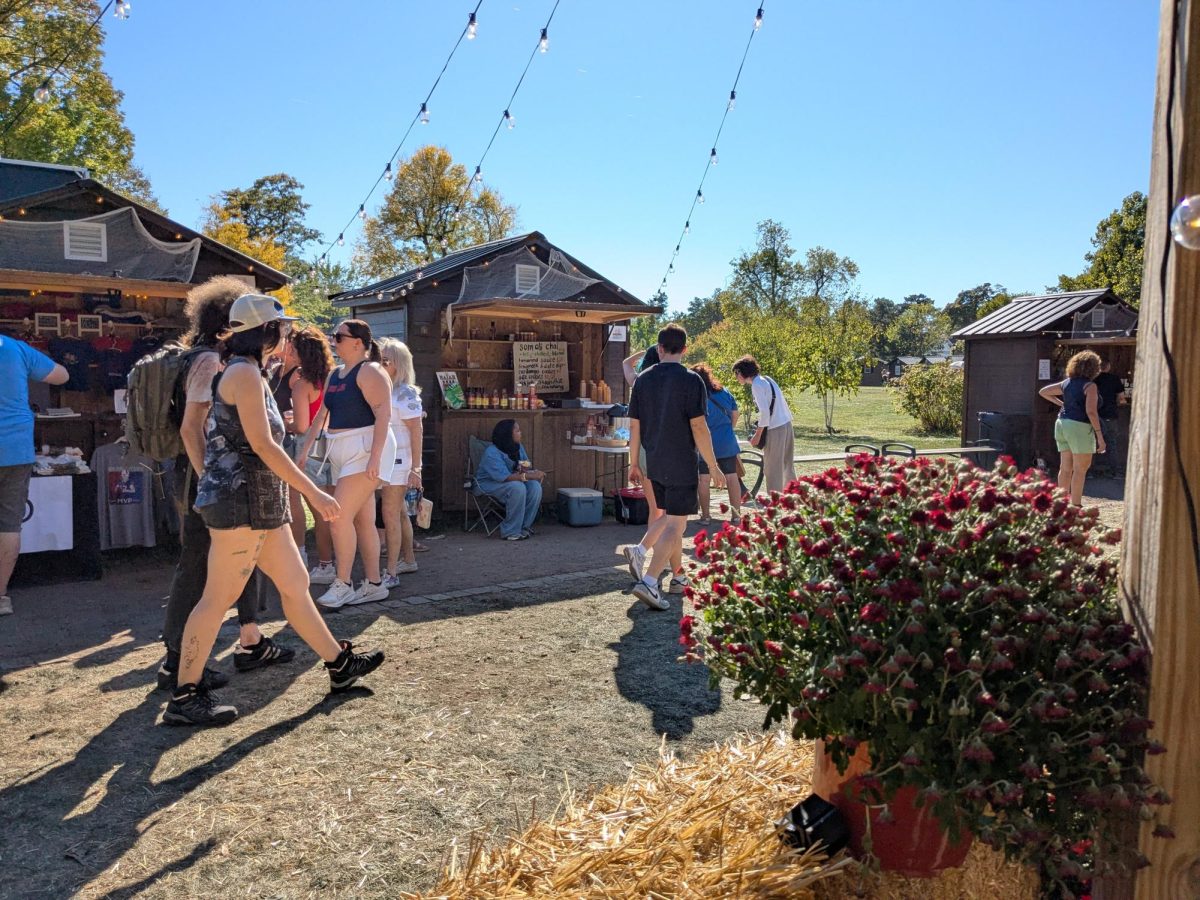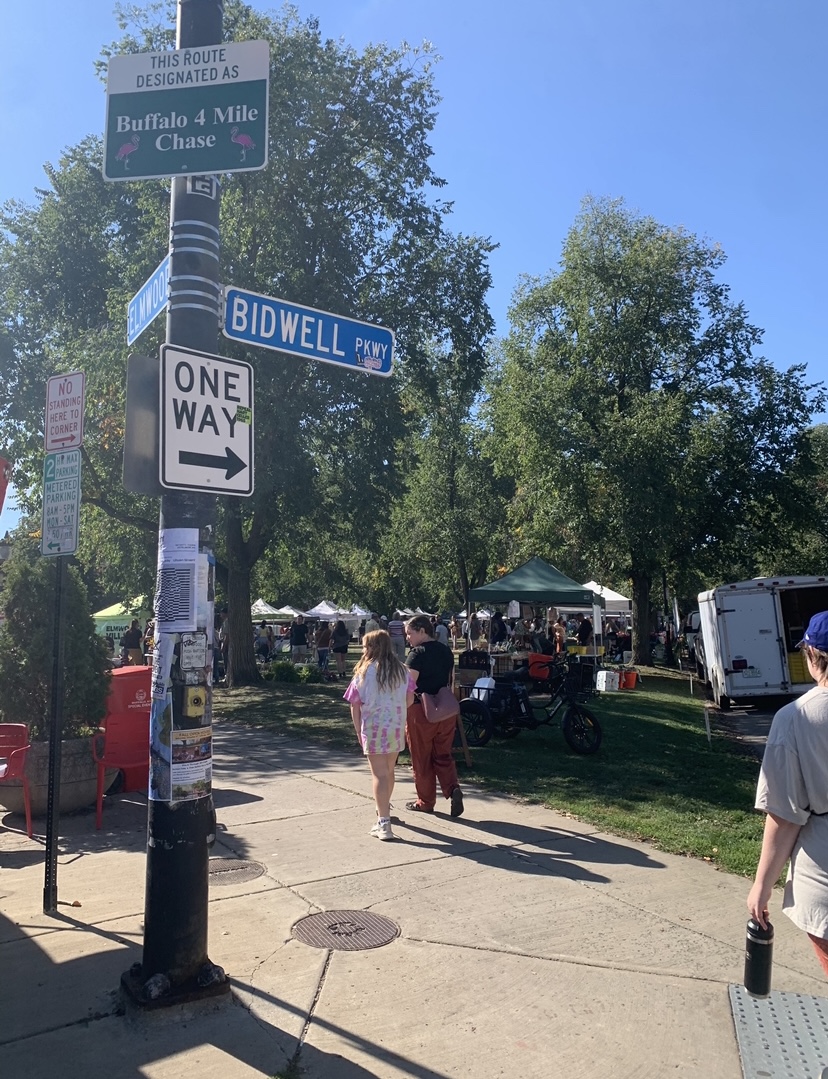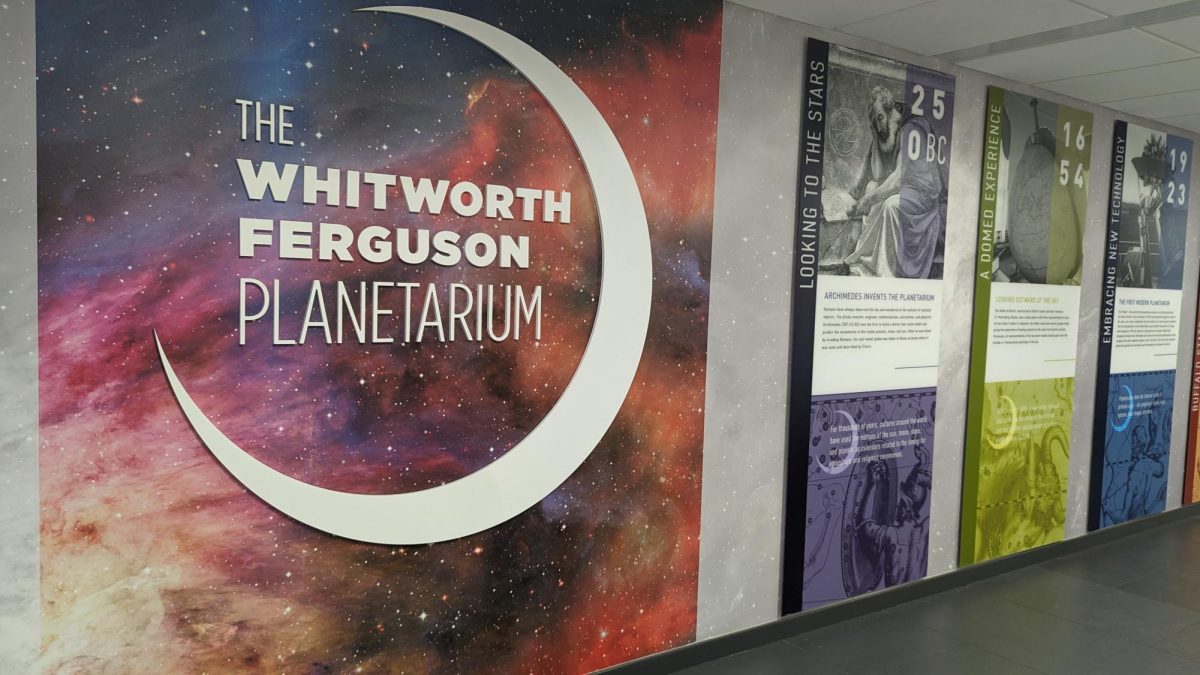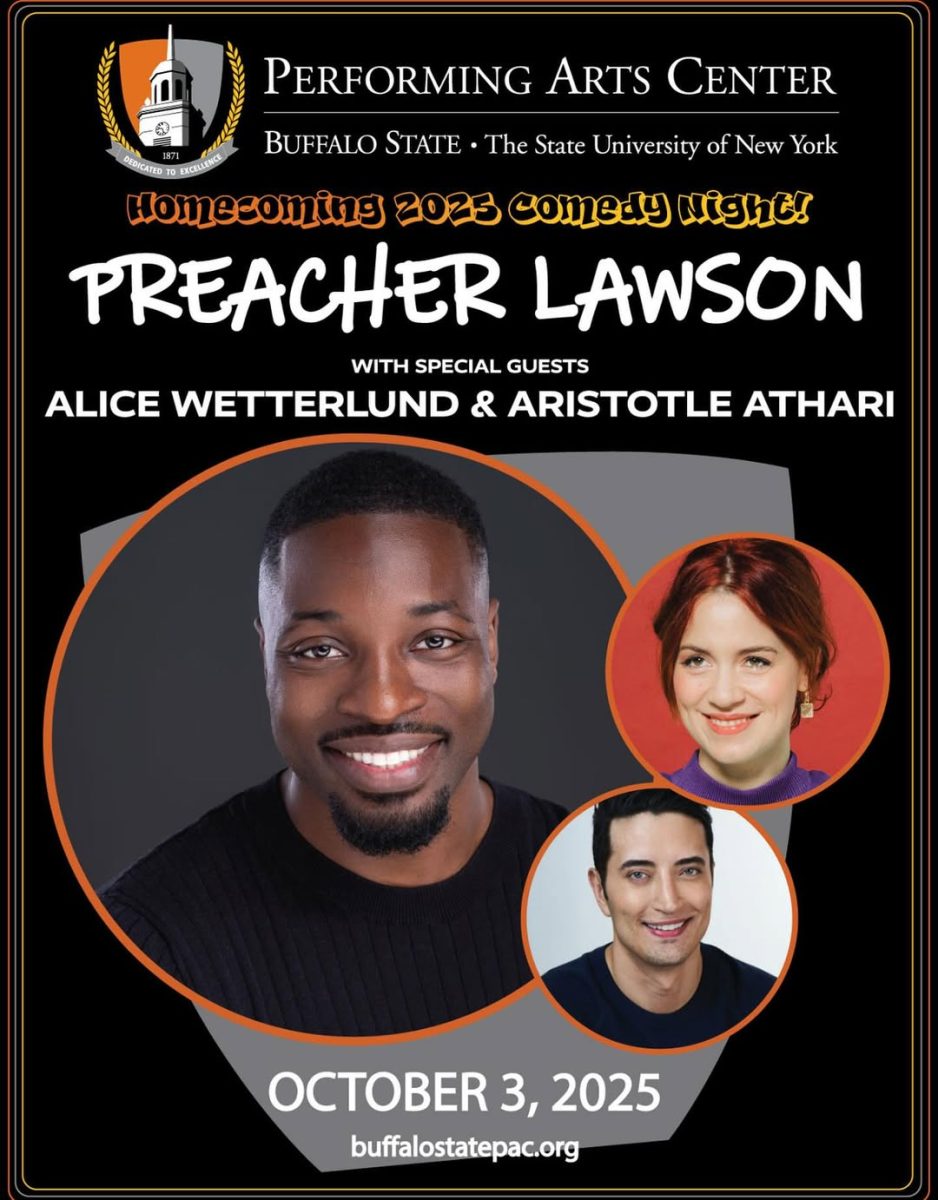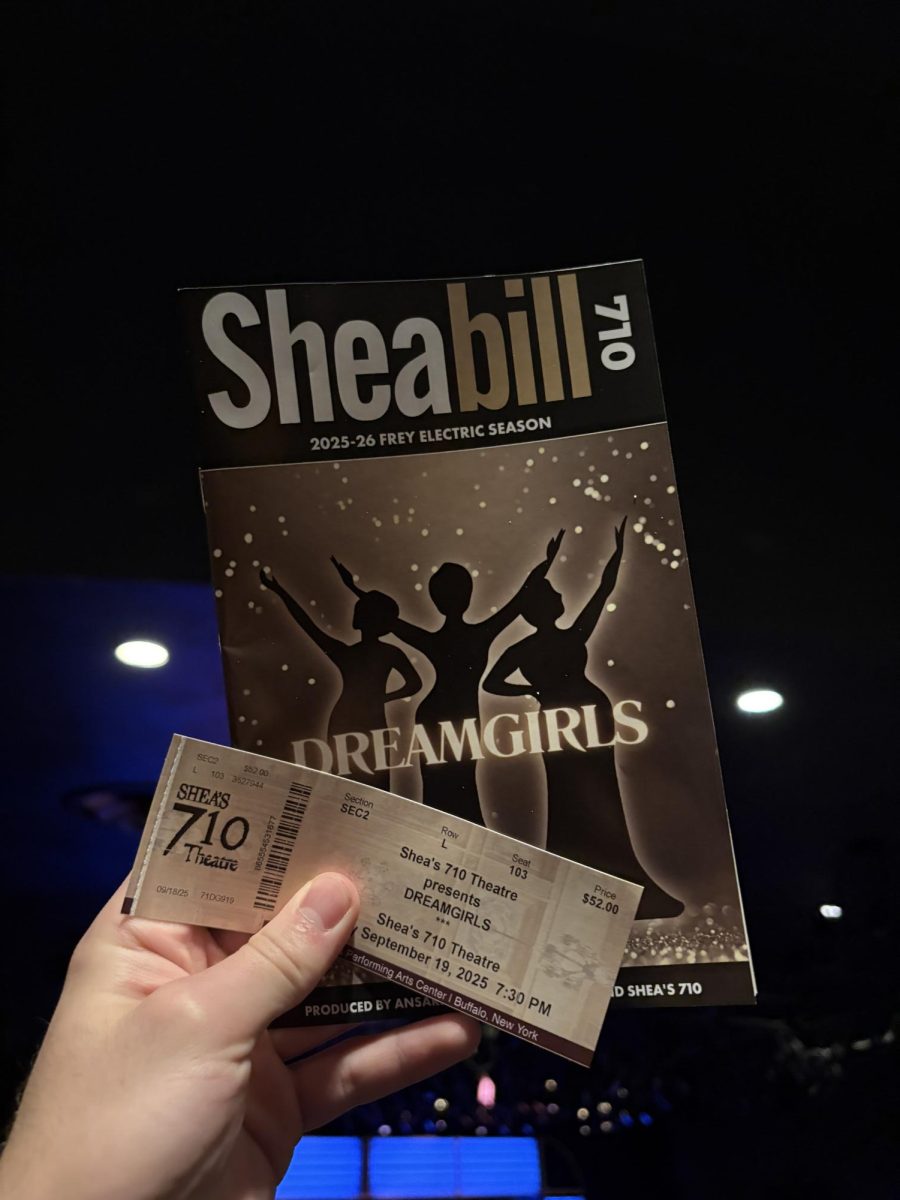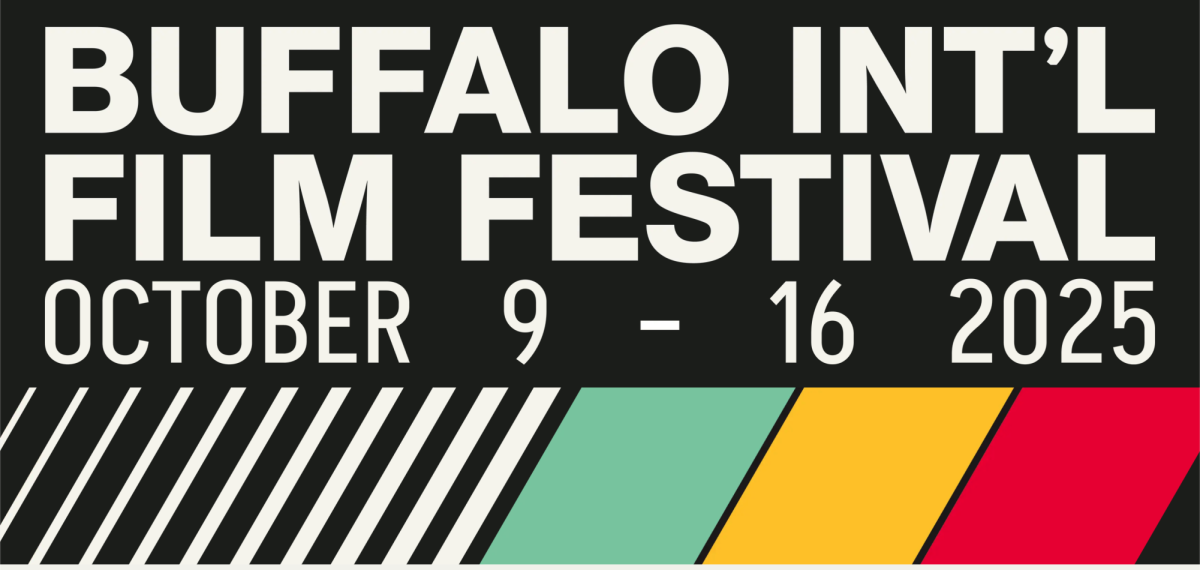
This week marks the 19th annual Buffalo International Film Festival (BIFF), a week-long celebration of independent cinema that brings filmmakers and audiences together from across the globe.
Beginning in 2006, the event originally lasted three days. Now it is held for a full week, where over 200 films are hosted.
The films featured in the festival are varied as well, from feature-length stories to documentaries to short films. The full lineup can be found on BIFF’s website, alongside available passes for viewing the films.
The films are being shown in a variety of theaters across Buffalo, including but not limited to: Hallwalls Contemporary Arts Center, North Park Theatre, Duende, and the Buffalo Toronto Public Media station.
But beyond the screenings and schedules, BIFF is shaped by the people who bring it to life, from those who organize it to the filmmakers who share their stories with audiences. Co-head John J. Fink and three filmmakers with projects featured in this year’s lineup spoke about the festival’s growth, its impact, and what it means to be part of it.
The following interview segments with John Fink, Brandon Moran, and Rick Masi are short segments from a longer interview that can be viewed on our podcast Just for the Record, available on YouTube and Spotify.
John J. Fink:
John Fink is the current co-head of BIFF. He joined the festival 10 years ago, beginning as the festival programmer and working his way up to co-head.
Q: How has it felt to be part of this festival for so long?
A: It’s been really gratifying to see it grow. We’ve seen filmmakers make that leap from making short films to really evolve as filmmakers into making bigger films and feature films.
Q: Would you say you’ve grown as a filmmaker while working with the festival?
A: Sure, I mean, as we tell our interns, this is a great film school to see the work that we get. We get about 1,000 submissions every year, and we can only take around 150–200 of them. So, you really get to see what works and what doesn’t work. The wonderful thing about doing this is I have a giant network of friends that are part of the festival or are alum of the festival. It’s always nice to travel and see them at different festivals and connect with them.
Q: Would you say this festival adds to Buffalo’s cultural identity?
A: Absolutely. One of the shorts programs that I’m really proud of is BIFF Shorts Canvas 716, and this is a way that we were able to bring in a lot of creative things happening around fashion and what’s happening in the street. It has a documentary about 10 tattoo artists in Western New York. It’s got a documentary about a graffiti artist who draws the stick figures you see around the industrial landscapes. Then there are the other pieces that are a little bit more performative, that sort of reflect that unique creativity that you see beyond the filmmaking scene. We really want to be that platform for everybody.
Q: Are there any films during the festival that you think are absolute must-watches?
A: There’s a lot of really great films. We have the world premiere of “Turn Up the Night,” it’s a fun hair metal movie. We also have “Baristas vs Billionaires,” which is our opening night movie with Alec Baldwin, who is one of the producers. If you really want me to get biased, my first film professor, Julie Forrest Wyman, and her film “The Tallest Dwarf,” is actually the film that kicks off the whole festival. It’s a really wonderful personal documentary.
Brandon Moran:
Brandon Moran is the director of photography on “Turn Up the Night.” He is also the director of “Last Farm in Reykjavik,” a documentary about a punk rocker turned museum docent part of the Icelandic Punk Museum, which is located in a repurposed public toilet. He primarily creates documentaries.
Q: What inspired you to pursue filmmaking?
A: Originally, when I went to college, I was going to be a high school social studies teacher. I got my bachelor’s in history and master’s in education, but the job market in New York State for history teachers is just extremely oversaturated. So, that combined with five years of substitute teaching, I realized that I didn’t really want to be stuck in a classroom with kids.
I ended up getting a job at D’Youville College as an international student recruiter, so I got to travel the world, and it was amazing. I’ve always had an interest in photography, so while I was doing this, I thought, “I should buy myself a camera.” I started making travel films and got obsessed with creating content.
Then one day, I emailed John Paget, and he started introducing me to other people in the industry. So I started networking and working with other people, building up my expertise, and eventually went full-time.
Q: Would you say your background in history influenced you to make documentaries?
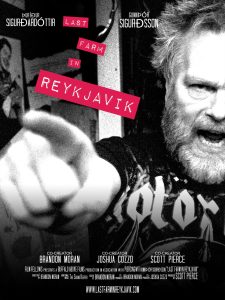
A: For sure. As a kid, I went to the theater to watch Indiana Jones and the Last Crusade. I love history, and all history is storytelling. The most practical thing that I can say carried over from those studies is that learning how to write, how to critically think, analyze, and then arrange a bunch of disparate thoughts into one cohesive paper that has a single point, that’s filmmaking. You take a collection of assets, whether it’s clips or information, and you find a common theme and use those facts to tell a story.
Q: Do you hope that your films will inspire others to go out and make their own?
A: Yeah, that’s why we do this, right? Like I said before, I was inspired by Indiana Jones. Then meeting John Paget and seeing what he’s done inspired me to elevate what I do and help spread the word about a cause.
Rick Masi:
Rick Masi is the writer for “Turn Up the Night.” He has been a filmmaker for about 12 years, with this film being in the works for about six years.
Q: What inspired you to pursue filmmaking?
A: In 2013, is kind of when I realized “oh, I can make movies.” I always had this misconception that you had to live in Hollywood in order to make movies. I grew up a huge fan of pop culture.
My wife and I, we got married in 2012. We’re both from Buffalo, but because of job reasons, we had to move out of state. I kind of went through this little existential period of “what am I supposed to do?” Around that time, Kevin Smith had a podcast called “SModcast.” I came across this podcast, and it was him and his buddy listening to a cassette tape of him, I think it was like 1989 or 1990. It got me to laugh when I hadn’t laughed about anything for a while. Listening to him talk, I went down the rabbit hole of Kevin Smith and eventually had this epiphany of “maybe I can be a filmmaker as well.”
Q: What was the inspiration behind “Turn Up the Night”?
A: Going back to the mid-2000s, I was in a band. Music was my first love. I grew up on ’80s hair metal and was a big fan of Prince and Michael Jackson, that era of music. I was in a band around that time, and it was fortunate enough to be approached by a record label, and I left during that process. It was nothing to do with the guys in the band, it was just the situation we were in. In my opinion, it was your typical mustache-twirling record executives who weren’t in it for the band. This was what gave me inspiration for “Turn Up the Night.”
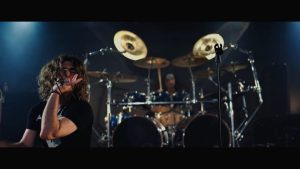
Masi also detailed the journey of the production and wanted to thank those who were involved with the film, saying that it could not be made without their help.
“We announced it back in 2018 and began shooting in 2019. At the time, we had a very traumatic experience involving one of the actors, so we had to stop production. But everyone felt that it was important enough to come back to it, so we returned back in early 2020, and then had to throw all those plans away because we weren’t going to be able to do anything [because of the pandemic]. So, from 2021-2023 is when we filmed, and then we edited in 2024, but we would not have been able to do that without the involvement within the Buffalo area. There are 400 or so names attached to this movie that helped in some way, whether they were somebody who let us use their restaurant or their space, or they volunteered their time for a day. Without Melodie Roehrig as the director and without Brandon as the director of photography, I don’t think that we’d be where we are today.
Eddie D. Murphy:
Another director involved in the festival is Eddie Murphy, a Buffalo State alumnus. He has two pieces playing at the festival: “Be Happy,” which is an original concept pilot for a television show he produced, it’s about a disgraced former children’s television host whose characters come to life to help him pick his life back together, and “Jabberwock,” which Murphy directed and produced, and is a silent short film adaptation of “Alice in Wonderland.”
Q: What inspired you to pursue filmmaking as a career?
A: I wanted to pursue filmmaking as a career after growing up watching and loving movies. My earliest memories are spent watching the making of documentaries on DVDs and becoming enamored with the idea of being part of the team that gets to make these decisions. Decisions in movies are all about making people feel a certain way, and I wanted to make people feel.
Q: Is there anything that you’ve learned from being involved in these two projects that will shape your creative process in future endeavors?
A: From working with film on “Jabberwock,” I learned the importance of knowing your project front to back before you even get on set. On film, shooting is literally money, so you have a greater appreciation on a low budget of not wasting any time. The time management skills and need for knowledge of what you want your project to be about is a crucial lesson I’ve taken with me on all projects in all formats.
“Be Happy” was a truly collaborative project, so it was about being open to ideas. It’s really important to work with people who both understand your vision but are strong enough in their own ideas to bring them to the table. If you are unable to hear people out and implement other viewpoints, your project will not be as rich as it could be. Film is truly a collaborative medium, so the sooner you can work with other great collaborators, the better your projects will be.
Q: Do you think that this event helps support Buffalo’s creative image?
A: BIFF is such a huge staple of Buffalo’s film scene and art scene at large. I can’t think of a single person working in film professionally in Buffalo who has not played some part in a project that is highlighted at BIFF. It is a time for both the work of Buffalo industry veterans and newcomers like myself to show our projects while also getting a chance to see truly breathtaking stories from across the world. BIFF gives a voice in Buffalo to those we would never otherwise hear from.
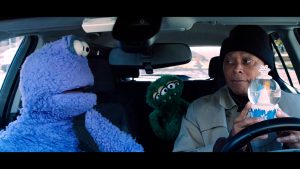
Q: Do you hope that people will be inspired by your films?
A: If I could inspire anyone from these projects, I’d hope to be able to inspire other people with limited resources who wish to create. I hope it can help people realize you don’t need money and huge crews, just a story and a group of people who want to help tell it.
As the Buffalo International Film Festival continues into its 19th year, its blend of local and global talent reaffirms Buffalo’s growing role in the independent film scene. For filmmakers and audiences alike, BIFF remains not just an event, but a celebration of storytelling in all its forms.


